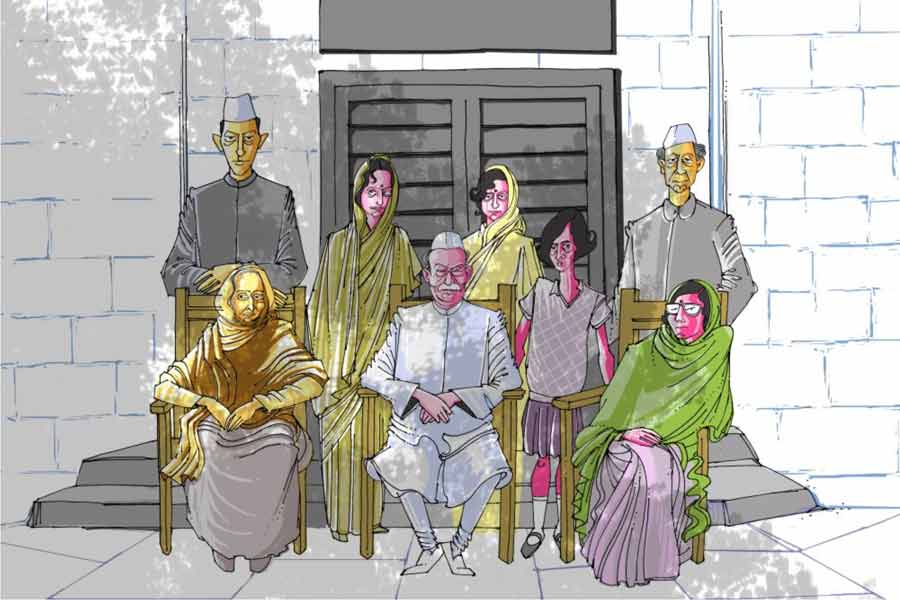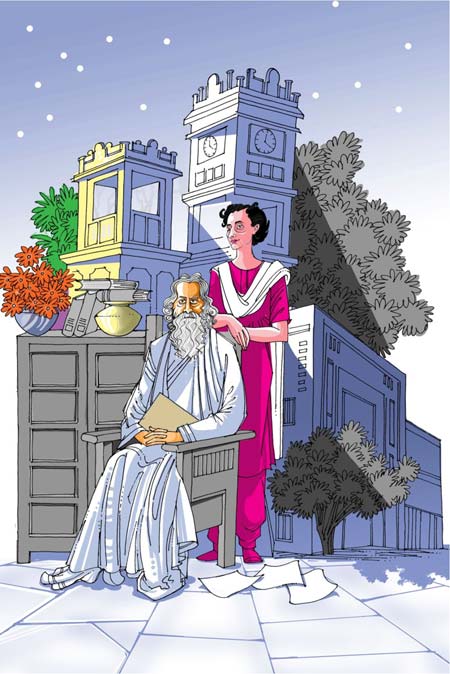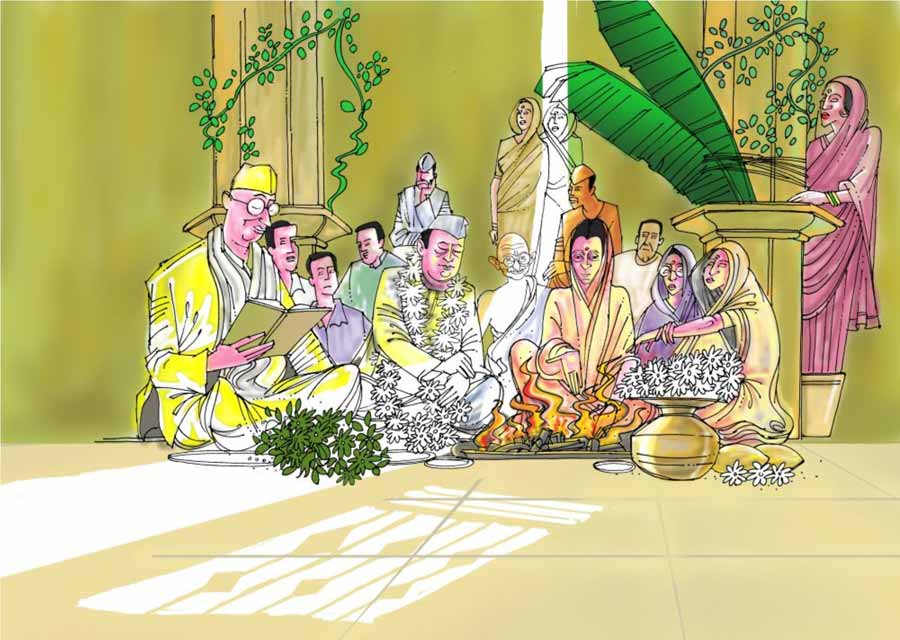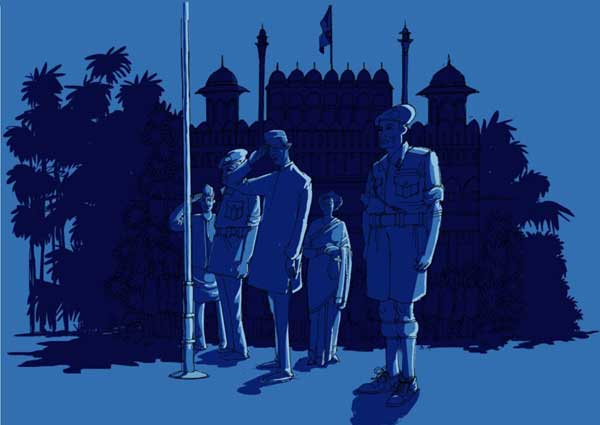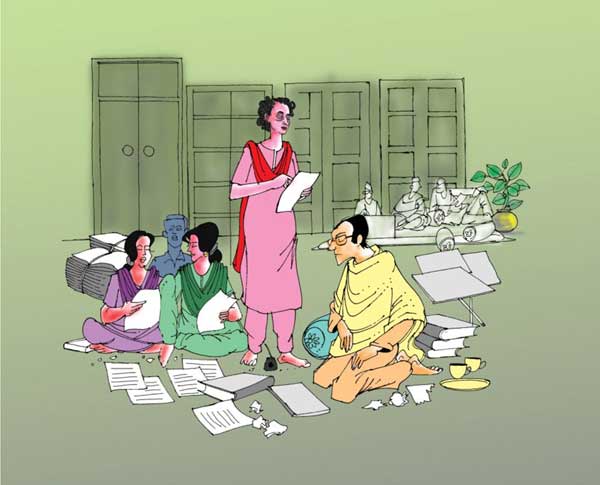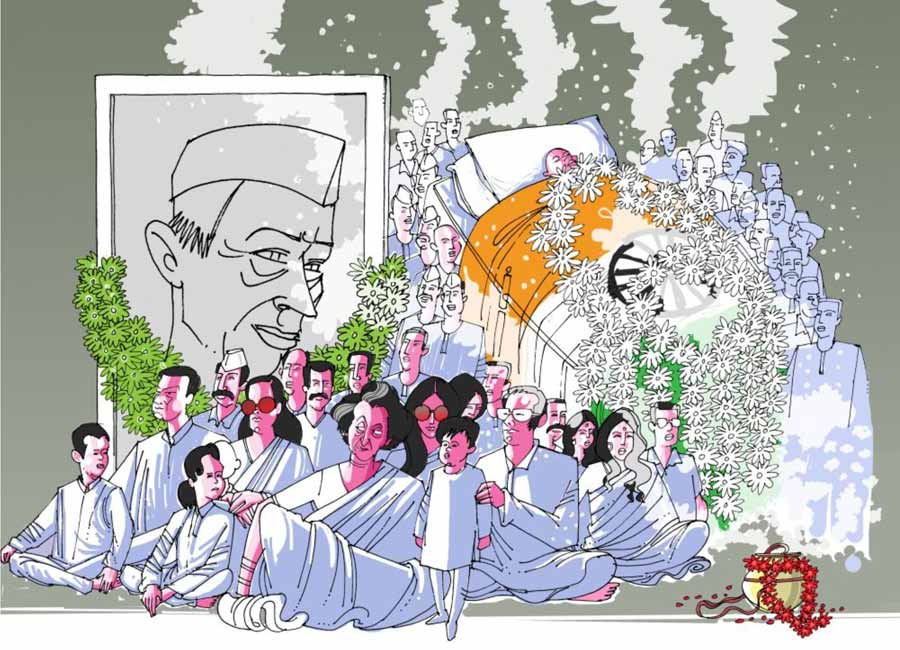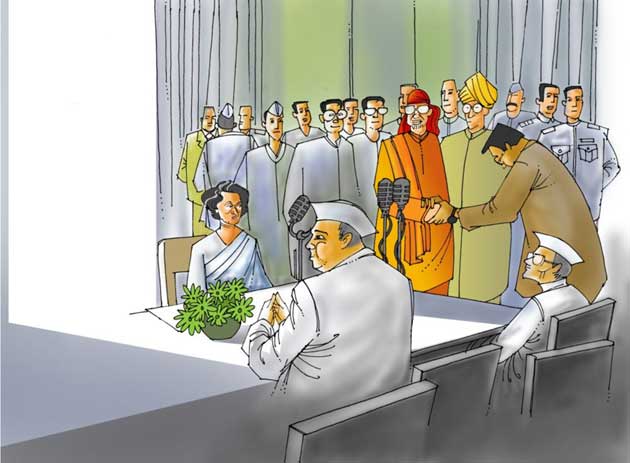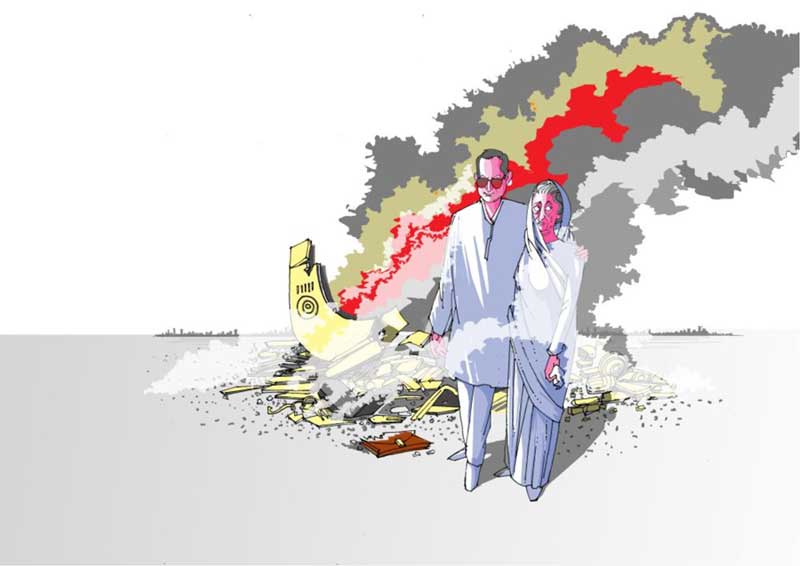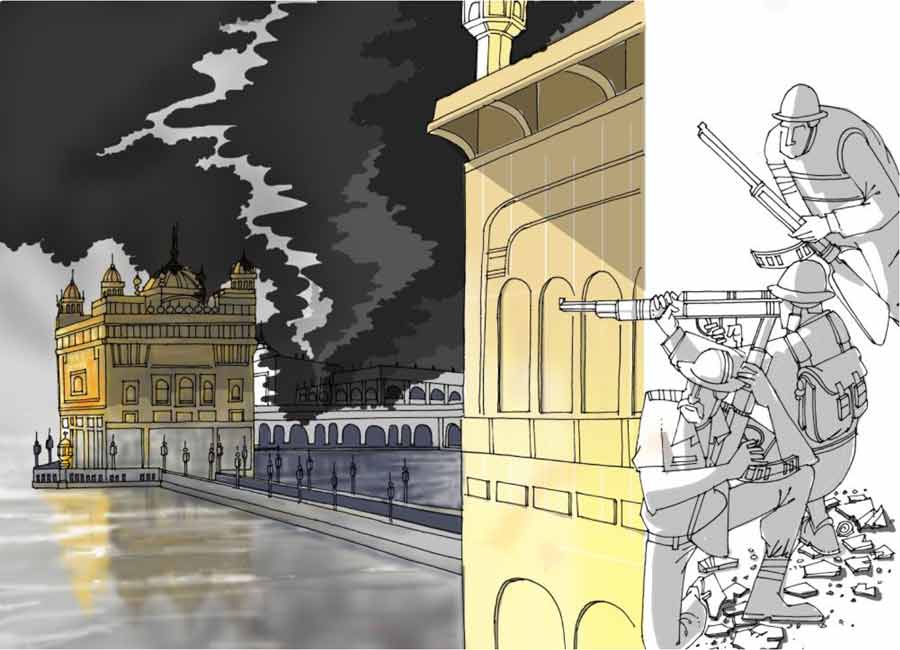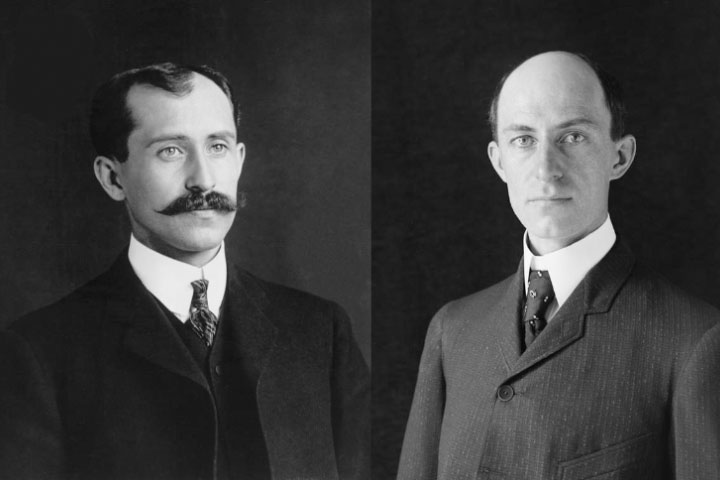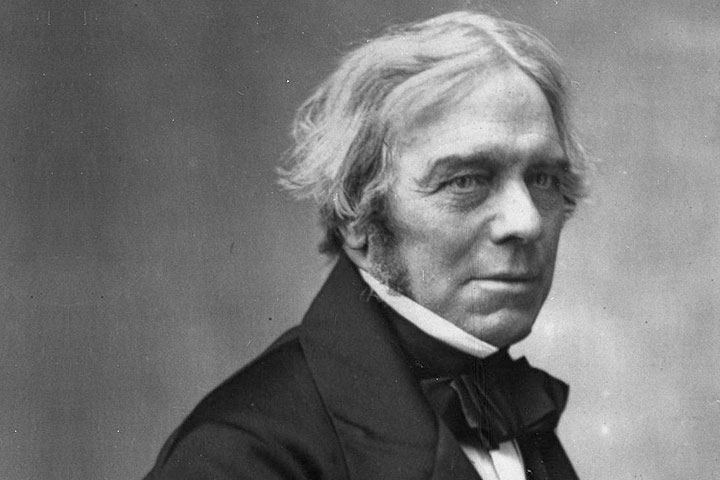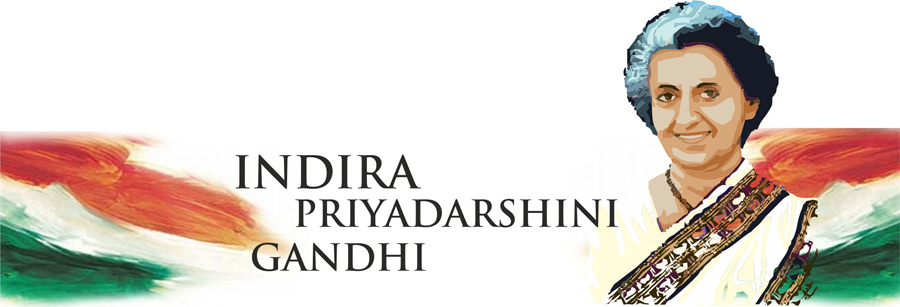
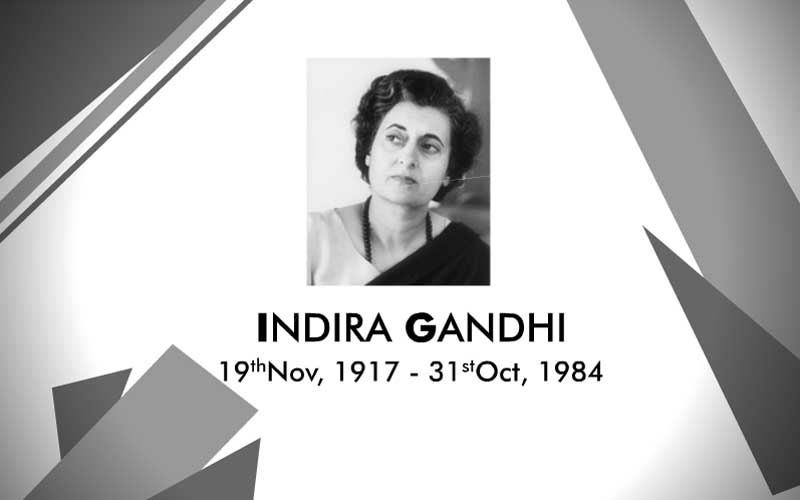
Introduction
The ancient and mythical Indian sub-continent is a confluence of multi-linguistic, multi-cultural communities bound together in a democratic framework. The entwined nature of politics, economics and religion leads us to deify our political leaders whilst they get entrenched in the public mindset as playing larger than life roles. One such magnanimous personality was Indira Gandhi- the Iron Lady of India. She served as the first woman Prime Minister of India from 1966 to 1977 and then for over four years from 1980 onwards. Indira’s indomitable leadership left an indelible mark on the psyche of the mass of Indian humanity. Indira Gandhi basked in the intense glorification and adulation of the common man who worshipped her as Durga- the invincible, and was haunted by public anger and resentment when she unleashed a reign of terror during the infamous emergency of 1975.Her subsequent humiliating downfall in the 1977 elections and resurgence as the supreme leader when she took oath as Prime Minister in January 1980,reigning over the hearts of millions of Indians, brings to the fore an unprejudiced insight into the subconscious values, fears and beliefs that defined the enigmatic persona of Indira Gandhi. The pragmatic impact her leadership had in building up India as a prominent, progressive nation with a global perspective is eminent even 28 years after her brutal assassination by her trusted security officers.

The Mythical Backdrop
The sacred town of Allahabad is a centre of pilgrimage attracting millions of devotees who throng the city to wash off their sins at the holy Sangam or Prayag; the site where the trinity of rivers Ganga, Jamuna and Saraswati merge in unison, symbolizing the balancing of centrifugal energies. The luxurious forty two room mansion ‘Anand Bhawan’ of the affluent and influential lawyer Motilal Nehru, who practiced at the Allahabad High Court, represented the clout of the Indian intelligentsia, the liberals who hobnobbed with British Lords and Viceroys. His wife Swaroop Rani was a staunch believer of the traditions and customs of their ancestors - the Kashmiri Pundits. She lavishly furnished their home with Persian carpets and bohemian cutlery; wore Saville Row suits and lived with élan. Motilal Nehru hired renowned tutors and bestowed an impeccable education on their three children: Jawaharlal Nehru, Vijayalakshmi and Krishna.
Jawaharlal completed his education from the esteemed Trinity College of London. Motilal Nehru chose a demure bride for him, the charming Kamala Kaul, who was brought up in a typically Indian household starkly in contrast with the anglicized environment at Anand Bhawan. An extravagant marriage ceremony was organized on Basant Panchami, 8th February, 1916. Kamala experienced a great deal of trepidation on her entry into Anand Bhawan due to the domineering nature of her mother-in–law and the condescending attitude of her sister-in-law Vijayalakshmi, who was extremely possessive of her brother Jawaharlal and therefore resentful and envious of Kamala’s presence by his side.
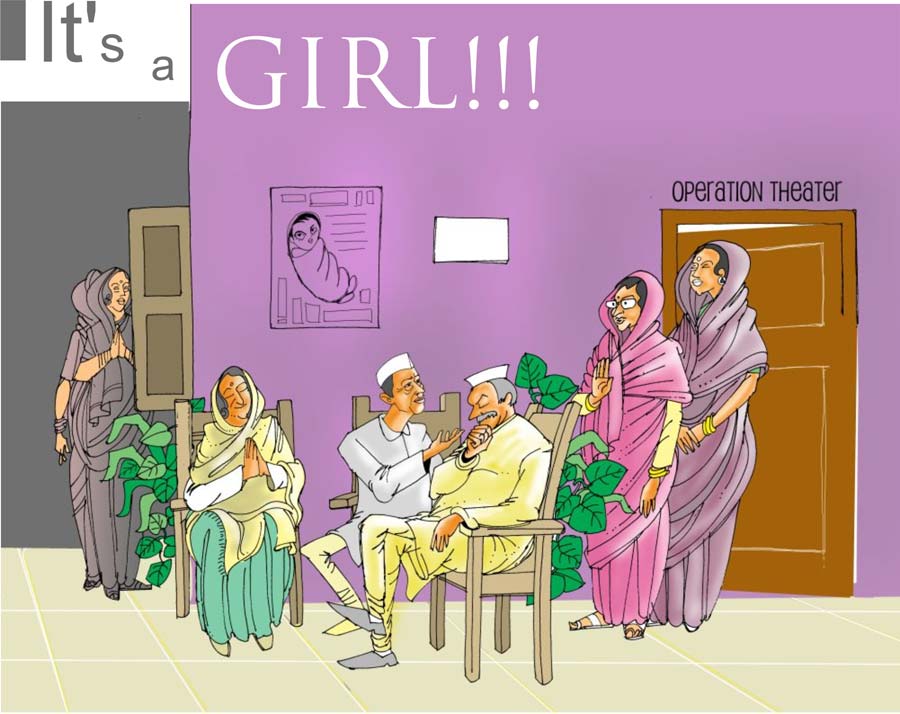
It's a girl !!!
The family was overjoyed with the news of Kamala’s pregnancy and Swaroop Rani expected her ‘grandson’ to be welcomed by the customary beating of the thali. However, on 19th November, 1917, an apprehensive Jawahar who waited with bated breath along with members of the Nehru clan got a nonchalant response from his mother Swaroop Rani who announced the birth of his child with the monosyllable ‘Hua’. The bewildered Motilal soon realized that Jawaharlal had been blessed with a little daughter whom he named Indira Priyadarshini. Indira was pampered by her doting parents and spoilt by her loving grandparents. She spent her time playing on the lawns, climbing trees, participating in the festivities of the annual Magh Mela with her grandmother Swaroop Rani. However, this idyllic childhood was short lived, as the enactment of the Rowlatt Act in 1919 which became a law to deal with the revolutionary protesters of the Indian freedom struggle, led to the tragic Jallianwala Bagh massacre on 13th April, 1919. The brutal killing of 379 peaceful protesters by General Dyer infuriated Motilal Nehru, who immediately gave up his flourishing legal practice and led to transformation of the hitherto liberal Nehrus who now staunchly opposed the British rule and vehemently dedicated their lives to the Indian freedom struggle. Bonfires were burnt of all the imported household furnishings and the doors of Anand Bhawan were thrown open to the commoner as it became the headquarters of the Indian Nationalist movement.
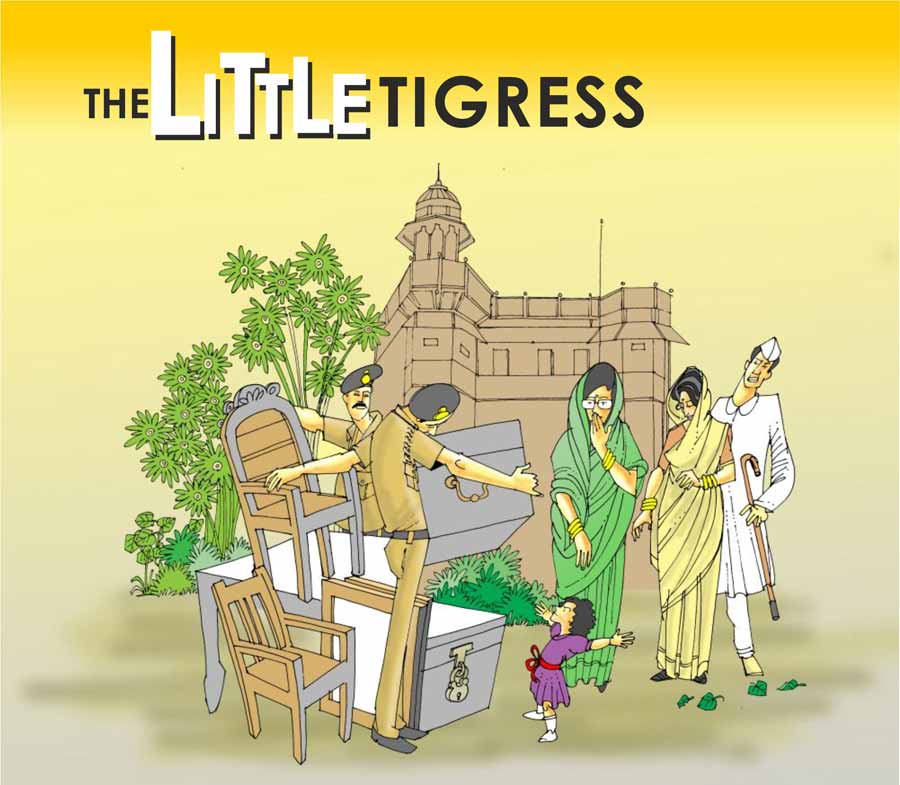
The Little Tigress
Indira’s early childhood memories were a vivid recollection of Motilal Nehru’s confinement which was followed by Jawaharlal being arrested in the wake of the Non-Cooperation Movement launched by Mahatma Gandhi in 1920. The four year old Indira observed an embarrassed judge prosecuting her beloved ‘dadu’ or grandfather in a packed courtroom in December 1921. When a police team reached their house to usurp the family’s belongings, a valiant Indira broke free from the grip of her stoic mother and leaped towards the baffled policemen like a little tigress fending off an intrusion into her territory. She refused to allow the policemen to confiscate her dadu’s guns, silver and other valuables. Fifty years later, Indira said, “From the age of three I felt responsible for myself. Whether I was or not did not matter, I also felt fiercely responsible for my parents, for I thought they were defenseless and relations and friends took advantage of their goodness. I had a feeling of wanting to protect something very big.”
Indira used to dress up like a boy in khadi pyjamas with a cap and would delight in defying the guards who would prevent her from darting into secret meetings of the Congress Working Committee and settling in her dadu’s lap. Indira imbibed her grandfather’s values as was evident in a statement she made, “My grandfather once told me that there were two kinds of people: those who do the work and those who take the credit. He told me to try to be in the first group; there was much less competition.” She spent her time boisterously flying kites and rejuvenated herself climbing trees, instinctively connecting to nature as she was encouraged to run to build up her stamina. Her room at Anand Bhawan was her haven of security where she fantasized herself to be the Joan of Arc or the Rani of Jhansi. Though she felt unnerved, Indira obeyed her father who forced her to walk alone across a long dark corridor towards her room, in the hope that she might overcome the terror of imaginary shadows lurking behind her in darkness.
The constant demands of the Indian freedom struggle and the commitment of the Nehru lineage to the larger cause of India’s sovereignty meant that Indira’s childhood lacked the security of a stable home as the stress of the traumatic imprisonment or the fear for the life of a family member was perennial. By the time Indira was six, she empathized with her mother Kamala, as the latter wilted due to the pressures of living with a neglectful husband who chose to ignore the overbearing dominative attitude of his mother and sister towards his docile wife. The traumatic death of a second son born to Kamala Nehru in November 1924 dragged her into the throes of depression. Her mysterious illness later flared up into a dreaded form of tuberculosis. In March 1926, Jawaharlal, accompanied by eight and a half year old Indira, took a frail Kamala to Geneva for treatment. ‘Indu’ as Indira was fondly called by her parents was a self reliant child and was confident enough to undertake alone by tram and train the daily journey to the L’ecole Internationale School where she had been enrolled. Being the daughter of a cultured father, she had the opportunity of meeting luminaries like scientist Albert Einstein, Romain Rolland – author and philosopher and others. When Kamala recovered from her illness, the family travelled extensively over London and Paris visiting museums, art galleries and historical monuments. As her father disapproved of reading fairy tales, Indira was veered towards reading about Simon Bolivar – the revolutionary Venezuelan general who took on the Spanish empire, Mazzini- the Italian nationalist and his comrade Garibaldi. While Jawaharlal was engrossed in the resolutions of the Indian National Congress, he communicated with Indira through a series of poignant letters which encompassed issues of endurance, familial obligations, perseverance and subservience of personal desires for larger objectives. International perspectives were considered while examining domestic issues in order to widen Indira’s horizon of learning.

Indira commandeers the 'vanar sena'
In 1929, Indira’s father Jawaharlal Nehru was elected the President of the Indian National Congress and the twelve year old Indira, being a voracious reader, independently read out the draft and committed herself to ‘PURNA SWARAJ’ – complete independence from the British Empire. In 1930, Mahatma Gandhi, who was like a father figure to Indira, launched the Salt Satyagraha – a movement aimed at breaking the Salt Law with the Dandi March. Under Gandhi’s patronage, peaceful satyagrahis were to march from Sabarmati Ashram to Dandi, a village in Surat district around 385 kms away. Gandhi extolled the fervor of women as they played a revolutionary role by picketing shops selling liquor and imported cloth. Indira was possessed with an ardent desire to travel to Dandi to witness the historic event. The Nehru women, especially Kamala Nehru, astounded everyone by her tenacity and endurance as she addressed public meetings, picketed shops and stood undaunted in the face of a lathi charge. Indira inspired by her mother, at once withdrew herself from the Jesus and Mary convent and with an indomitable spirit formed the Vanar Sena - an army of children aged between 5 and 18. She displayed meticulous organizational skills and planned with precision, events like strikes in schools, distribution of pamphlets etc. In an incident, Indira was made to sit in the backseat of a car containing secret documents and she convincingly managed to persuade the sergeant who was checking the car to confiscate the papers, to let her off as she would be late for school!!!

Complexed realities
Indira was bereaved at the loss of her dadu- beloved grandfather who pampered her with showers of indulgent affection; Motilal Nehru was snatched away by the cruel hands of death on 6th February, 1931 marking the end of Indira’s carefree, boisterous childhood. Tensions were rife amongst women in the family and Indira overheard a casual remark by her aunt Vijayalakshmi, “She is ugly, stupid.” Indira - an adolescent struggling to come to terms with her grandfather’s death was torn apart and blemished forever with the thought that she did not possess either beauty or intelligence that were distinguishing characteristics of the Nehru clan. She was unforgiving and retreated into devastating, formidable silences. This trait of internalizing conflicts, due to the inherent Nehru pride which forbade an outward expression of grief or an impulsive outburst of emotions, was a distinctive trait of her personality all through life’s ups and downs.
The self willed and obstinate daughter of Jawaharlal Nehru was now sent into People’s Own boarding school at Poona without being taken into confidence by her parents. The alienation from her ailing mother and inability to visit her imprisoned father had a profound impact on Indira who also took the family’s changed financial situation in her stride by emulating the austere and frugal habits of her mother. Her mother, in view of the dwindling family income, sold off her ornaments and deposited the proceeds in a trust to secure Indira’s future with respect to financial requirements.

Shantiniketan - The abode of peace
After her matriculation at Poona, Indira continued her education at Shantiniketan- ‘The Abode Of Peace’. Shantiniketan was a forum for Indira’s cherished unison with nature where she continued her study of languages like French, German and Bengali. Indira was initiated into discovering inner silences and began to appreciate creative expression in the form of art, drama and poetry. “You must learn to be still in the midst of activity and to be vibrantly alive in repose”, was the result of the solitude she experienced at Shantiniketan. She revered Rabindranath Tagore and was in harmony with nature in the company of aesthetically inclined individuals. Around the same time, Feroze Gandhi, a young Parsee youth who volunteered to assist Kamala in her political pursuits as a representative of the Congress Party at Allahabad, proposed marriage to Indira. However, she declined it as too frivolous a concern in view of the grave and challenging political situation in India. Her education met with an interlude as she had to accompany her mother to Berlin in June 1935 due to the latter’s rapidly deteriorating health. Jawaharlal Nehru had complete faith in Indira’s ability to handle the crisis but emphasized that the journey should lead to her maturation from a shy, self-centered introvert to an extrovert who embraces international consciousness with open arms.
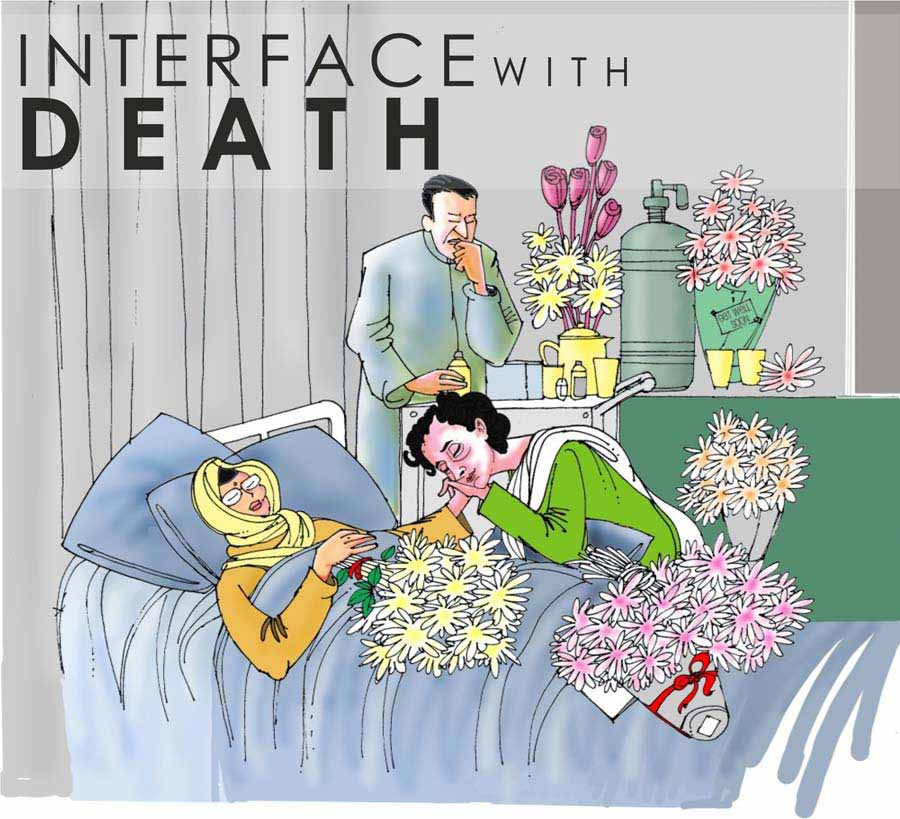
Interface with death
Kamala Nehru’s condition turned from bad to worse at the Badenweiler sanatorium and doctors gave up any hope of her recovery. A distraught Indira linked the ominous thunderstorms accompanied by lightning to the arms of death furiously closing in on her stricken and defenseless mother. This led to a lifelong fear of violent storms which left her feeling terrorized and drained out. Indira joined Mile Hemmerlin’s School at Bex, which she hardly enjoyed except for the ski lessons in the December snow. Jawaharlal Nehru was released from prison at Almora in September 1935 and boarded the first flight to meet his critically ill wife. This union between the father and daughter gave succor to the anguished Indira and lifted some of her burdens. Feroze Gandhi, who considered Kamala to be his mentor, visited her en route the London School of Economics. It is probable that Kamala discussed Indira’s marriage with the intellectual and trustworthy Feroze, implicitly seeking solace in the hope that her daughter would be well taken care of after her impending death. Indira was barely eighteen when she courageously faced her mother’s untimely death at the prime age of 37 on the fateful day of 28th February, 1936. The traumatic and tragic death of Kamala Nehru inflicted a searing wound on Indira which even time could not heal. Indira had inherited a hard core and an indomitable spirit from her mother, yet, she felt hopeless and rootless with an uncertain bleak future. Jawaharlal Nehru was overwhelmed with a sense of obligation towards his motherland and took over the Presidentship of the Congress Party. He returned to India immediately, even if it meant leaving his daughter alone in moments of grief to fight her own battles. Indira’s misgivings towards her father’s complacency, with regards to Kamala Nehru’s oppression by his over bearing mother and scornful sister, along with his indifference and neglectful relationship with his wife, created a chasm in the father- daughter relationship. During this time, Indira was drawn towards Feroze who offered attentive companionship and shared warm memories of Kamala Nehru with her. Indira returned to India to find her father distant and emotionally entangled in a relationship with Padmaja Naidu, the attractive daughter of freedom fighter Sarojini Naidu. Indira, who was extremely proud and possessive of her legendary father felt disillusioned and dejected and decided to return to Paris.
It was in the romantic setting of Paris that the young Indira finally accepted the marriage proposal of Feroze. Not surprisingly, she remained furtive about her intimacy with Feroze in letters to her father. She joined Somerville College, Oxford University in October 1935, in order to concretize her father’s dreams as he envisioned her maturing into a dynamic leader. Indira had an unassuming personality and to the utter surprise of her contemporaries, she fumbled as she was forced to read out her father’s message of solidarity with China at a function organized by the Indo-China league. Indira returned to India in November 1938, in view of the strengthening of the Fascist forces and to recover, as she was diagnosed with Pleurisy, even before completing her course due to failure in the Latin examination. She made a second futile attempt to complete her education and returned to Oxford University a year later, but suffered with a relapse of the Pleurisy. One can relate to the emotional turmoil she experienced as an adolescent struggling to recuperate in a gloomy sanatorium traversing the same path and reliving the memories of her mother who eventually succumbed to her illness. Indira faced the tribulation with the resilience of a weed whose struggle for survival enables it to bend with every storm in order to live. Jawaharlal Nehru extolled her steadfastness and fortitude as he advocated that diseases of the body have to be fought with a strong mind. In order to instill emotional independence in her, he wrote: “be mistress of your own life, your present, your future and go ahead, consult me certainly, but decide for yourself.” The faithful Feroze showered her with gifts, care and affection knowing that the opposition of the Nehrus to this alliance would require them to tread upon a thorny path strewn with burning embers.
The Civil Disobedience Movement in October 1940, led to the arrest of Jawaharlal Nehru. Indira along with Feroze undertook an arduous journey back to India, a voyage fraught with danger and turbulence due to the escalation of World War 2. Indira met Jawaharlal at the Dehradun Jail and revealed her ardent desire to marry Feroze, citing the need for companionship and to raise her children in a stable home. Jawaharlal Nehru was engulfed with a sense of betrayal not only because Indira chose to marry a Parsee who did not belong to the elite classes like Nehru’s other associates, but also because the heir to the privileged Nehru lineage who seemed destined to lead the nation to glorious heights opted to settle for a mundane, domesticated existence as a mere housewife. Indira’s obstinacy to discard family heritage and marry Feroze made her father relent. The marriage was solemnized on Ram navami (a Hindu festival, celebrating the birth of the Hindu God Lord Rama) on 16th March, 1942, followed by festive celebrations with the blessings of Mahatma Gandhi, relatives and friends.

The inner calling at the threshold of freedom
The Quit India Movement was launched on 8th August, 1942, and Indians were determined to seize control of their destiny and nation. A massive public rally was organized at Gowalia Tank in Mumbai where the national flag was unfurled in Indira’s presence. Jawaharlal Nehru’s arrest in Mumbai had a profound impact on Indira who returned to Allahabad to find Swaraj Bhawan, the headquarters of the Congress Party, sieged by army officers. Enraged by the brutality of the British and infused with patriotic fervor to defy the authoritative British rule, Indira addressed a mammoth public rally where she was attacked by the police and subsequently arrested. This was a turning point in Indira’s life, where all thoughts of personal gratification were vanquished in order to surrender oneself to the larger cause of India’s freedom. This marked the transformation of a shy, self- conscious Indira who swore never to speak in public, to an emphatic leader passionately connecting with the crowd and arousing them from slumber. Indira spent eight months in captivity, which served as a lesson in endurance and a voyage of self-discovery where she finally encountered her inner calling cajoling her towards a higher destiny.

An interlude of growth
Indira was overwhelmed with joy to embark into motherhood when she discovered her pregnancy. An equally elated Feroze ensured that she received the best medical facilities in India and brought her to Mumbai, where their first child Rajeev Ratna was born on 20th August, 1944. Jawaharlal Nehru was released from Ahmednagar Jail in June 1945 and met his grandson at an emotional family re-union at Srinagar. By 1946, Jawaharlal Nehru was the interim prime minister. Indira took a momentous step forward to occupy the niche created for her by resolving to leave Allahabad and living with her father in Delhi. As the gracious official hostess to Presidents, philosophers and stalwarts of the Indian freedom struggle, an observant Indira mastered the nuances of protocol, diplomacy and political manipulation. The initial euphoria of companionship and marital intimacy wore off and gave way to ripples of tension, perhaps due to the infidelity of Feroze Gandhi. Feroze, a meticulous and accomplished journalist was working in Lucknow with National Herald, a news magazine founded by Jawaharlal Nehru, and during this period he got involved in an intimate relationship with a lady while staying away from Indira, who continued to live in Delhi. However, he was dutifully present besides Indira when she delivered their second son Sanjay on 18th December, 1946, in a complicated birth which even put Indira’s life in peril. Rajeev and Sanjay spent the formative years of their childhood at Teen Murti Bhawan which resembled a museum, despite Indira’s efforts to bring up her sons in a homely atmosphere. Enjoying the privilege of being the Prime Minister’s grandsons, Rajeev and Sanjay grew up amidst the grandeur of the luxurious spaces. They grew to love animals as they had pandas, tiger cubs, horses and even a crocodile as pets!!! Indira however, ensured that they were not spoilt by materialistic possessions like expensive toys and other fringe benefits, and sent them to a private school run by Elizabeth Gauba. Rajeev was soft-spoken, docile and suave which was a complete contrast to the rebellious, out-spoken and adamantly demanding Sanjay. The children basked in the adulation of the Indian masses whenever they accompanied their mother and grandfather at official functions like the fascinating and pompous Republic Day celebrations. Strangely, Indira’s sons did not inherit her voracious reading ability and a lifelong love for books.

A tryst with destiny
At midnight, on 14th August, 1947, when the world was in a slumber, India awoke, ready for its tryst with destiny. Indians rejoiced ecstatically when their motherland was liberated from the British rule. Almost numb with excitement, Indira stood in the background as Jawaharlal Nehru unfurled the national flag from the historic Red Fort. The dark side of the celebration of freedom, so intensely yearned for, was the partition of India that brought with it massacres, communal riots and looting. Indira was returning from Missouri to Delhi by train along with her two kids, when the train was stopped by miscreants and a man presumed to be a Muslim was attacked. In a stunning move, a fearless Indira jumped out of the train and rescued this man from the fury of the hysterical crowd to the safety of her compartment. Indira served selflessly in Muslim refugee camps waking up at 5.00 a.m., helping out by cleaning streets, providing rations etc. and coming home late into night, often risking her life by confronting fanatic attackers. She rescued hapless victims of senseless violence, completely disregarding numerous threats to her life. The year 1948 brought with it the shocking assassination of Mahatma Gandhi, whom she had always considered to be an elder of the family. It served as a stark reminder of the price that the liberators of India paid for the sake of a better tomorrow. A deeply anguished Indira mourned along with the entire nation that was engulfed in the darkness of despair.
On the personal front, Indira’s equation with Feroze deteriorated further due to the humiliation he experienced while being considered low in protocol in comparison with his wife, who occupied a place of pride as the first lady presiding over all formal functions held at Teen Murti Bhavan, Jawaharlal’s official residence. Feroze Gandhi was aware of Indira’s inability to give off herself unconditionally, right from the inception of their relationship. On being elected to the Lok Sabha from Rae Bareilly in 1952, Feroze joined Indira and his endearing sons Rajeev and Sanjay at Teen Murti Bhava. However, he soon felt claustrophobic in the formal structure of Teen Murti Bhawan where the grimness of protocol had to be maintained. He eventually moved into an official residence and his sons looked forward to staying over with their enthusiastic father who spent qualitative time doting over them while they bonded over gardening and building cars in a relaxed environment, with laughter and mirth flowing uninhibited. The wall of conflict between Indira and Feroze created an insurmountable rift in their marriage. Feroze eventually sought solace in extra marital affairs and was at the brink of a divorce from Indira.
The children continued their education at a boarding school. Rajeev excelled in his studies while Sanjay, being disinterested in the conventional academic structure, eventually dropped out of the prestigious Doon School in Dehradun. The boys continued with their higher education in England following the footsteps of their mother and grand-father. As the children were away from her now, Indira Gandhi worked ceaselessly, electioneering for her father as a member of the Central Election Committee of the Congress.
She was a part of the Indian delegation as the prime minister travelled to U.S.A. and Soviet Union. Child welfare was her forte and she established Bal Bhawan. Tribal dancers and rural artisans received patronage from Indira and Jawaharlal, as creative expression enlivened their spirit. Indira was abreast of international trends and orchestrated the establishment of the prestigious National Institute of Design at the serene banks of Sabarmati, Ahmedabad. Reiterating her firm belief in the Doctrine of Karma, she stated emphatically, “Have a bias towards action - let's see something happen now. You can break that big plan into small steps and take the first step right away.”
Feroze Gandhi had revitalized the youth and was a formidable parliamentarian as his eye for detail and the thoroughness of a journalist gave him an in-depth understanding of national affairs. Jawaharlal Nehru interacted with Feroze with a tinge of conceitedness which led to a failure in building a close rapport with his son-in-law. Perhaps, it instigated Feroze who exposed scams and irregularities by Nehru’s trusted ministers like T.T.Krishnamachari and M.O. Mathai, the P.M.’s special assistant. This campaign to malign Nehru’s integrity further infuriated Indira, who climbed to greater heights within the Congress Parliamentary Board, much to the chagrin of her sidelined husband. The gloom and depression of a stormy marriage, marked with tempestuous arguments and ego clashes overshadowed Indira’s political success. Though her mind resembled a labyrinth, her outward demeanor exuded grace and poise. Feroze suffered a heart attack and Indira lovingly nursed him while they worked towards reconciliation and took their sons for a vacation in Srinagar.
Indira was elected to the highest post of Congress President in February 1959 at the young age of 41, an achievement which speaks volumes of her political acumen. Jawaharlal Nehru felt proud of her and in a touching tribute spoke, “At first Indira Gandhi had been my friend and advisor, then she became my companion and now she is my leader.” Indira and Feroze had major political confrontations which turned into malicious personal attacks on each other, on controversial issues like Indira’s obstinacy which led to the declaration of President’s rule by toppling a Marxist government in Kerala in the mid-1950s. However, the tragic and untimely death of Feroze Gandhi who suffered a fatal heart attack at 48 was devastating for Indira, as the couple shared a deep bond of commitment which anchored them together, irrespective of the grave misunderstandings. Indira immersed herself in working with UNESCO and with an unfathomable spirit she overcame self-pity and crushed every impediment to her meteoric rise.

A luminous presence fades into darkness
Jawaharlal Nehru, under the influence of Defense Minister Krishna Menon, undermined the Chinese army which vanquished Indian troops in the Indo-China war of 1962. The Chinese army was stationed within thirty miles of Tezpur, Assam which led to hysteria as the entire administrative machinery, including the district commissioner abandoned their posts being crippled with fear. Indira, enraged by such cowardice, completely discarding all threats of her being taken hostage, defied her father and flew to Tezpur in order to provide solace and pacify the Assamese, who felt betrayed by the Indian Government. A unilateral ceasefire was announced the same day but Nehru withered away due to the scathing criticism by the media and suffered a massive paralytic stroke at the 68th session of the Congress held at Bhubaneswar. Indira was his lifeline and she served him whole-heartedly and channelized all his official work. However, the absence of a succession plan during Nehru’s illness triggered infighting amongst his ministers as there were plausible claimants to the prime minister’s seat.
Nehru collapsed at 1.40 p.m. on 27th May, 1964, and Indira seemed to witness the proceedings in a daze. Indira, touched by the exquisite beauty of a white rose placed in a vase, broke down when she was alone and registered the enormity of the loss. The practical implication of Nehru’s death was the disturbing reality of having to shift out from the regal Teen Murti Bhawan to a smaller bungalow at 1, Safdarjung Road. Indira took charge of the Ministry of Information and Broadcasting under the Prime Ministership of Lal Bahadur Shastri. She always defended her stand on important issues like forcibly imposing Hindi on South-Indians even though it evoked criticism from the P.M. Indira paid homage to her father’s legacy by organizing an exhibition on Nehru’s life and work which was inaugurated at New York and travelled to Soviet Russia and London on its way to New Delhi. While Indira travelled to London for the exhibition, she spared some time from her busy schedule to meet Sonia Maino an affectionate Italian studying at Cambridge with whom Rajeev was deeply in love and wanted to formalize the relationship into marriage.
In the war of 1965, when Pakistan invaded Kashmir, Indira had the audacity to visit Haji Pir Pass, which was captured by the Indian Army after heavy bloodshed, much to the amazement of Indian troops. The shocking demise of Prime Minister Lal Bahadur Shastri on 10th January, 1966, after being struck by a massive heart attack at the Tashkent Summit which was called to formalize the ceasefire, paved the way for Indira who came a step closer to her destined position.

Golden priod of great glory beckons Indira
Indira was approached to take over as the Prime Minister by veteran Congressman K.Kamaraj, in the mistaken belief that she would be a mere puppet, dancing to the tune of stalwarts of the Congress. The fact that she was well travelled and was recognized by the political fraternity meant that diplomats across the world associated her as the face of India. This further added to her credibility as being a worthy leader of the future generation. Indira faced stiff opposition from Morarji Desai, a Gujarati mastermind in politics, who expected the coveted position on account of seniority. Indira visited Rajghat to seek the blessings of the Mahatma and proceeded to the Teen Murti Bhawan to pay homage to her beloved ‘papu’ who dreamt about this glorious ascent since Indira’s childhood. Indira superseded Morarji Desai by a huge margin as she secured the support of most of the Congress chief ministers. Indira took oath as prime minister swearing allegiance to the Indian Constitution on 24th January, 1966, and this was the beginning of a new chapter in the entwined destinies of India and Indira.
Indira attuned herself to the intrigues and maneuvers, masterminded by the chauvinistic stalwarts who undermined her maturity and dynamism as she galvanized the bureaucracy. Indira’s proactive style of governance meant she dealt with multifarious problems like drought relief, tackled riots in the North East and decisively carved out the state of Haryana for the Hindi speaking population of the erstwhile Punjab. She would meet around 500 people every morning at her residence and ensured prompt redressal of their grievances. As a novice parliamentarian, Indira would fluster as deliberate attempts were made to interrupt her while she read out well-rehearsed scripts. Ram Manohar Lohia, a senior member of parliament and her critic, referred to her lack of spontaneity as he mockingly labeled her ‘Gungi Gudiya’ or dumb doll.
Indira called upon President Charles de Gaulle at Paris who was impressed by her conduct. She visited President Lyndon Johnson who extended co-operation and released food aid. Indira resolved to steer India towards self–reliance and was the architect of the Green Revolution which led to the use of fertilizers and mechanization of agriculture. The White Revolution, which brought about self-sufficiency by increasing the production of milk, targeted the problem of malnutrition. Indira firmly believed that, “A nation's strength ultimately consists in what it can do on its own, and not in what it can borrow from others.” With firmness, she executed the controversial devaluation of the Indian Rupee on the advice of International Monetary Fund. Indira’s steadfastness can be gauged from the following incident in Orissa. As she addressed a public rally campaigning for the elections of 1967, a stone was hurled at her inflicting a wound on her nose. Displaying exemplary resilience she used her saree to soak up the blood and continued interacting with the stunned crowd. Indira won the elections of 1967 and entered the Prime Minister’s office on the 20th of January, 1968, exuding energy and confidence at the prime age of 47.
Within a month, her elder son Rajeev, who was now a pilot with Indian Airlines, tied the knot with his soul-mate and companion Sonia Maino on the 25th of February, 1968, at their residence, 1, Safdarjung Road. The marriage was registered by a magistrate and solemnized in simplicity. Rajeev and Sonia sought their privacy and were blessed with a son Rahul who was born in 1970 and a beautiful daughter Priyanka born a year later on 12th January, 1972. Indira glowed with pride as she doted over her grand-children and loved playing word-games with them.
On the political landscape, Indira emerged stronger within the party as veteran politicians belonging to the inimical syndicate like Kamaraj, S.K. Patil, Atulya Ghosh stood defeated in their respective constituencies. Indira supported Zakir Hussain’s candidature as President of India despite stiff opposition from the syndicate and was vindicated when he won. However, the sudden death of Zakir Hussain brought victory for Sanjiva Reddy who was supported by the syndicate as against Jagjivan Ram, Indira’s candidate. Indira, as usual, tactfully avoided impulsive confrontation but never forgave an insult, often inflicting a lethal attack when the opponent disarmed himself in an illusion of security. Indira relieved Morarji Desai and took charge of the Finance ministry to discourage others from inviting her wrath. The much acclaimed nationalization of banks was credited to Finance Minister Indira Gandhi. Due to irreconcilable differences, the syndicate expelled Indira from the Congress on 1st November, 1969. “All my games were political games; I was, like Joan of Arc, perpetually being burned at the stake”, this statement by Indira revealed her resolute temperament in the face of adversity. Indira was hurt by this situation but was hopeful and requested the President to dissolve the Lok Sabha, banking on the strength of the ‘Young Turks’ as her followers were called.
Indira was sworn in as the prime minister for a second time after elections held in February 1971. She was hailed by the public as she chanted “Garibi Hatao”, promising the masses emancipation from the curse of poverty, as against her opponents who reduced the election to execute a personal vendetta solely aimed at dislodging Indira Gandhi.

Durga- The invincible
One of the challenges Indira faced as prime minister was the crisis that originated across the border due to elections in Pakistan. In the election to the Pakistan National Assembly, majority seats were won by Awami League of Sheikh Mujib-Ur Rehman of East Pakistan. Refusing to accept the mandate, President Yahya Khan sent troops to brutally massacre innocent people who demanded a government chosen in the polls. The exodus of millions of refugees into India led to enormous economic and social burden. Despite repeated appeals, the international community chose to ignore the issue due to U.S. President R Nixon’s antagonistic and condescending attitude towards India and Indira. On 4th December, 1971, Indira Gandhi declared war to liberate East Pakistan. The Indian Army led by General S. Maneckshaw along with members of Mukti Bahini – a revolutionary outfit of East Bengal, strategized the Indian victory. The U.S. exerted pressure on the Indian side by ordering the Seventh Fleet into Indian waters but so vociferous was the Indian attack that the Pakistanis were battered. They retreated and surrendered even before the Seventh Fleet arrived. The entire nation cutting across party lines rallied behind the prime minister who now entrenched herself in the minds of the masses as ‘Durga – the invincible Goddess’ valiantly destroying evil forces to preserve justice. Indira displayed equanimity in midst of the euphoria of victory and declared a ceasefire on the battle ground in West Pakistan to avoid the escalation of the situation into a World War. Indira received a standing ovation in the parliament and stood tall as a world leader respected for her stature and impeccable integrity. The success of the Shimla Agreement with the president of Pakistan, Zulfikar Ali Bhutto was a feather in her cap as she reiterated her commitment towards peace, while preserving national pride.

The turbulent 70s
The period between 1973 and 1975 was a turbulent period due to the cessation of U.S. food aid, economic burden of the war, inflationary pressures etc. The only exception to this dismal state of affairs was Indira’s successful foray into harnessing nuclear power, when Indira Gandhi directed scientists at the Bhabha Atomic Research Centre to conduct India’s first nuclear test at Pokhran, Rajasthan on 7th September, 1974.Gujarat was in turmoil on account of a violent agitation supported by Jaiprakash Narain against Chimanbhai Patel’s corrupt government. A massive railway workers strike, masterminded by Union leader George Fernandes was crushed with stringent penalties against the culprits. Indira was the target of a malicious campaign accusing her government of blatant nepotism in the controversial Maruti project, a venture promoted by her younger son Sanjay Gandhi. The opposition exposed irregularities in sanctioning of land, obtaining credit from nationalized banks and mismanagement, which ultimately led to directives to banks to cut off further supply of funds. The prime minister shrouded herself in an impregnable wall of secrecy alarmed by rumors of a conspiracy to destroy her, while further alienating her well-wishers due to arrogance stemming from the victory. Sanjay’s disclosure about his love affair further aggravated Indira’s volatile mental framework. Indira, who in normal circumstances, wished to find a demure Kashmiri bride for Sanjay, was perturbed to be informed that Sanjay had set his mind on marrying Maneka Anand whose father was a Sikh Colonel serving in the Indian Army. Sanjay’s wedding on 23rd September,1974, was a private affair and was made public by writing letters seeking blessings from friends and family. Maneka was barely seventeen, throbbing with wild energy and enthusiasm, and was passionate about Sanjay’s political endeavors as he was a friend, confidant and advisor to his mother.
In an out-of-the blue catastrophic development, a suit filed by Indira’s defeated opponent Raj Narain, pertaining to fabricated charges of technical malpractices which led to her unanimous victory in February 1971, was judged against her on 12th June, 1975. The Allahabad Judgment nullified Indira’s election and she was barred from holding office for six years. A massive public rally was mobilized by J.P.Narain and Morarji Desai instigating the police and army to defy her orders, thus posing a grim threat to the law and order situation in the country. Indira Gandhi sought the advice of Sidharth Shankar Ray, the Education Minister who prescribed the imposition of emergency laws, on account of an internal crisis on 25th June, 1975. President Fakhrudin Ali gave his approval on the assurance that the declaration would be ratified by the cabinet.
A stunned nation watched with disbelief the horrific measures that forfeited their fundamental rights and led to mass arrests and other atrocities which included complete censorship of the press. Television bulletins were broadcasted after the approval of the prime minister and electricity was cut off to newspaper offices. Sanjay Gandhi, Indira’s younger son who was her primary advisor and trusted confidant, authoritatively controlled the bureaucracy with an air of arrogance turning a democracy into a monarchy. The censorship meant international journalists were asked to leave the country, tarnishing India’s image. J. P. Narain, Morarji Desai, George Fernandes and other critics were arrested by a savage Indira, overriding fundamental rights in an unparalleled manner. 85 year old freedom fighter Bhimsen Sachar wrote an open letter to the prime minister conveying anguish and distress at the unconstitutional, authoritarian and dictatorial suppression of the fundamental right of speech and freedom of press. On 25th July, all the senior citizens who were signatories to the letter were arrested. Indira was betraying the very ethics which defined the integrity of Jawaharlal Nehru. Though it was expected that Indira would lift the emergency on 15th August, 1975, she was mortified by insecurity and dismay when she heard of the brutal assassination of Sheikh Mujib –ur- Rehman, the prime minister of Bangladesh along with his family at dawn on 15th August. She had been warned about similar plots being hatched for her as the next target by R.N.Kao, chief of the Research and Analysis Wing (RAW). Indira was so overwhelmed by the mental turmoil that she came under the influence of tantriks (alchemists) and astrologers who predicted doom unless Sanjay’s proximity to Indira ended. Sanjay, young at barely 29, was dynamic and felt red tapism must be avoided and the Indian economy must bounce out of the vicious circle of poverty and over population rapidly, whatever may be the cost!! With complete disregard for psychological counseling, men were forcibly sterilized, the entire government machinery went berserk recruiting men for vasectomy, taking the number of cases to a mind boggling 1,07,56,964 in two years from 1975 to 1977.
An over ambitious beautification drive meant that orders were given to demolish refugee colonies encroached upon public land around monuments. The urgency of the operation was flabbergasting as hutments were demolished with insensitivity to the hardships caused by heavy flooding. Thoughtless demolitions of heritage structures in the ancient city of Varanasi outraged the public. Indira was alienated from the resentment of the public due to the sycophancy of her ministers who filtered the disturbing outcry.
Drawing a parallel from Indian mythology where inner conflict and confusion is cleared from the clouded mind of the protagonist by a divine sage, the storm-swept almost hysterical demeanor of Indira was pacified in the presence of J. Krishnamurti, the enlightened philosopher who initiated self-realization in moments of silent contemplation, and Indira made a conscious decision to redeem the masses from the excesses of emergency. The ideal of democracy which was a luminous jewel in India’s crown and so deeply cherished by the architects of the Indian constitution had to be restored to its previous glory. On 18th January, 1977, Indira took a momentous decision to release all opposition leaders and hold elections on the 19th of March. Indira was dissuaded by Sanjay and her political advisors who felt that a cooling off period to erase the memory of the oppressive emergency was necessary, but a strong believer in the Doctrine of Karma as preached in the Bhagvad Gita, Indira was committed to taking the right action, irrespective of the consequences that may follow. Indira’s troubles multiplied manifold when seasoned politician and the undisputed leader of the Harijan community, Babu Jagjivan Ram, along with other stalwarts of the Congress Party who were miffed by Indira’s refusal to lift the emergency laws, formed their own party Congress for Democracy. Indira realized instinctively that this fatal blow would turn the tide against her in the ensuing elections.

On the brink of collapse
Indira campaigned relentlessly for over five weeks, and intuitively realized that the twinkle of admiration in the eyes of the public had given way to disillusionment with her governance and a stoic resolve to bring about change. The turmoil of the emergency, especially the vasectomy, had engulfed the minds of the public in a wildfire of hatred that penetrated deep in the psyche of the wide expanse of Indian humanity which equated virility with manhood. The unprecedented defeat of the Congress Party which won only a single seat in all of Uttar Pradesh, Madhya Pradesh, Bihar and Haryana was numbing. Indira herself was defeated by Raj Narain who, capitalizing on Indira’s disfavour with the masses projected himself as the son of the soil. The grace and dignity with which Indira, the supreme authority who always hogged the limelight, accepted defeat was an example of immense strength. Indira’s political career was deemed to have hit a dead end, burying her into the depths of obscurity. Rajeev, who had strongly disapproved of the Emergency, personally held Sanjay responsible for his mother’s humiliating downslide from the pinnacle of power and authority.

Welcome to reality
Indira’s defeat in the parliamentary elections and ceasing to be the prime minister meant she had to search for alternative accommodation, as the present Janata Government was adamant on dislodging her. The frills in the form of furniture, servants et all were skimmed away. Unable to afford the rent demanded, she shifted to the rather cramped setting of 12, Willingdon Cresent. The Janata Government unleashed a fierce onslaught of travails beginning with a malicious propaganda and set up the Shah Commission inquiry into all the excesses of
emergency. Indira and her son Sanjay were the target of palpable antagonism of the present ministers who were seething with the desire to take revenge for their past arrests. The future held grave misgivings for Indira whose maternal instinct made her extremely protective of Sanjay, her favoured son and she shielded him like a tigress who kept predators at bay. CBI investigators could not find substantial documentary evidence against Sanjay for any willful wrongdoing.
In 1977, massacre of landless Harijan villagers in Belchi by the landowning community exemplified the helplessness of the downtrodden. Indira undertook a perilous journey wading through chest deep waters, as heavy flooding had caused tractors to remain stranded; boatmen were unwilling to ferry passengers,, and ultimately an elephant was called to carry the unrelenting minister and two of her terrified supporters. The heart rending cries of terrorized Harijans tormented Indira who regretted her failure to uplift them from the shackles of poverty and oppression despite being at the helm of affairs for twenty eight years. However, they were deeply moved by the tenderness with which she girdled them towards protection and were repentant for having betrayed her by voting against her party. Time had come a full circle. Dissatisfied by the chaos in the conflict stricken Janata Government which held together disparate elements that made cohesive governance impossible, the public hailed Indira at various forums. The Janata Government arrested Indira on flimsy charges pertaining to use of jeeps in elections, even without a proper warrant and she was later unconditionally released by the magistrate for want of documentary evidence. Indira was now elevated to the position of a martyr in the eyes of the common man, who was appalled at the Janata Government’s mission to annihilate Indira Gandhi in person rather than undoing the undemocratic measures instituted by her. Indira now travelled across India in order to reconnect with the masses at the grassroots. She garnered support from the array of devoted supporters in Gujarat and experienced the fury of angry, protesting mobs who vandalized the train in which she was meant to travel en route Kanchipuram to seek the blessings of the spiritual Shankaracharya of Kamakothi Math. The personal vendetta of the Janata Government against Indira Gandhi now resulted in pressure tactics and threats to her former supporters to testify against her in the courts of law. This led to her resignation from the Congress Working Committee and the subsequent expulsion of Indira from the Congress itself. Indira, wounded deeply at the hurtful expulsion after having served as a member for over forty years, on 3rd January,1978, carved out the Congress (I) with the palm as its symbol – figuratively denoting blessings.
The atmosphere at Indira’s home was politically charged due to ceaseless activity, ranging from CBI officers interrogating her at the behest of her sinister prosecutors, aggrieved commoners approaching her for redressal, to Sanjay strategizing the future course of action in consultation with his lawyers, much to the annoyance of Rajeev who deplored the ominous meetings and the ensuing lack of privacy. Tensions cropped between her daughters-in-law due to extreme differences in their conditioning and mental makeup, thereby tearing Indira apart. Sonia was concerned about the effect the chaotic environment would have on the safety and growth of her children. Maneka took the challenges in her stride but flared up as Sanjay was under pressure due to the changed political equation.
Politically speaking, the next battleground for Indira was the election at Azamgarh, Uttar Pradesh. Indira personally nominated her candidate Mohsina Kiddwai, a Muslim woman belonging to a family of staunch Congress supporters. Indira campaigned relentlessly for over 14 hours a day and appealed to the Harijans and landless labourers.
Indira’s uncanny shrewdness of political calculations was evident in Mohsina Kidwai’s landslide victory. The Janata Government’s loss of prestige due to Azamgarh defeat pushed them into panic mode and they squashed Sanjay Gandhi’s bail in one of the cases pertaining to the emergency and imprisoned him at Tihar Jail. Indira Gandhi was hemmed in by fears of her son being tortured in prison and the various threats of her disenfranchisement reposed by the Janata Government.
Indira visited ‘Chikmaglur’ literally meaning the ‘abode of the younger daughter’ and the warm felicitation she received from the local population who addressed her as “Indira ma” melted her heart. The probability of victory was higher in this constituency dominated by women especially because a majority of the households were still below the poverty line. Chikmaglur took centre stage in Indira’s political reincarnation. The opposition parties disrupted her canvassing by organizing stone pelting and roadblocks. However, Indira outmaneuvered them by disguising herself as a nun and travelling in a shambled car. The electorate empathized with a frail, widowed woman waging a lonely battle against a vindictive and chauvinistic government hell-bent on intimidating her in a labyrinth of woes. Indira won the Chikmaglur election with a lead of 70,000 votes!
Indira entered the parliament and got a hostile reception from the ruling party and reiterated amidst pandemonium and furore that she had never committed any breach of the ‘Privilege of the House’ in her reign as the prime minister. Indira was however held guilty, and imprisoned at the Tihar Jail on 19th December, 1978.

Fitting the pieces of a Jisaw puzzle
At the peak of her hardship, Indira’s mind reverberated with the words of famous singer Beethoven, “I will seize fate by the throat. It shall never wholly overcome me.” Indira refused to be overwhelmed by the tribulations and serpentine twirling of unceasing burdens that had befallen her. Indira drew upon her inner resources and her sixth sense to exploit the weaknesses of the Janata Government fragmented by infighting and jealousies. Staunchly believing that everything is fair in love and war, Indira justified her political agenda by saying, “My father was a statesman, I am a political woman. My father was a saint. I am not.”The shrewdly manipulative trait of her personality came to the fore when she extended a hand of friendship to Charan Singh who was bruised at having to yield Prime Ministership to Morarji Desai. Indira and Sanjay worked in tandem to execute the intricately designed “Divide and Rule” policy, in order to create a split within the Janata Party. Party politics were dynamic and intriguing like a game of chess, and Sanjay made the next move by subtly befriending Raj Narain, Indira’s foe who challenged her victory in the 1971 elections. Indira intentionally maintained a low profile to eliminate traces of her involvement in the growing hostility within the Janata Party. The Special Courts bill was legalized by President Sanjiva Reddy. The incredulous execution of President Zulfikar Ali Bhutto on 17th May,1979, traumatized Indira and added to her hysteria. It was imminent that she and Sanjay would be subject to a similar categorically ruthless persecution. In order to plan her next strategy, Indira immediately left for a holiday to Darjeeling with Maneka and Sanjay where summons for the first hearing were served to her. However, the breather at Darjeeling strengthened Sanjay’s bond with Maneka who made Indira ecstatic with the news of her pregnancy.
In a twist of fate, a high spirited Prime Minister Morarji Desai still beaming from the success of his Soviet tour faced a ‘No Confidence Motion’ initiated by the leader of the opposition. Providence smiled at Indira when a baffled prime minister resigned from his post as he could not garner support from his party loyalists. Charan Singh was sworn in as the Prime Minister and Indira assured him of her support on the condition that she would be consulted on major policy decisions. However, Charan Singh blundered by emphatically stating in an interview that the Special Courts would probe the emergency cases. Indira, true to her style, uncannily withdrew support just one day prior to the confidence motion due on 20th August. Charan Singh, certain to be defeated, requested the President to dissolve the Lok Sabha.
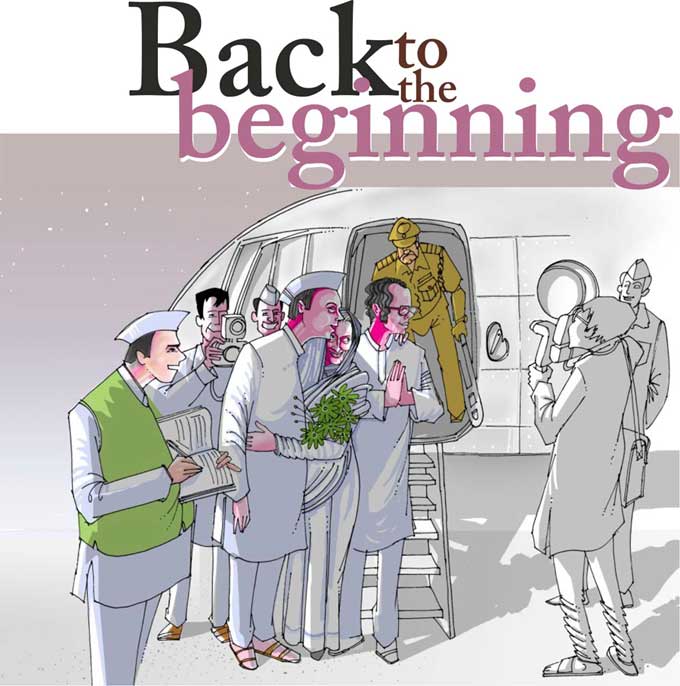
Back to the beginning
Life always gives one a second chance. It is called ‘Tomorrow’. This prophecy held true for Indira who brought her best foot forward to connect with the electorate in what was a golden chance to override her troubles. Indira traversed around 1000 kilometers a day for almost two months, beating fatigue and personally addressing around ten crore Indians. Displaying the agility of a person half her age, Indira, tireless at 60, awed the masses who were impressed with her immaculate appearance in spite of the humid, dusty environment. Indira won 351 of the 529 seats in the Lok Sabha. An ecstatic Indira glowed in the adulation, waving to cheering crowds as she was flanked by her sons Sanjay and Rajeev.

The cultural revolution
Indira’s government announced a four point agenda to reduce inflation, generate employment, conserve nature and use alternative energy resources. In order to reduce any frictions in the effective implementation of the central policy, Indira dissolved the state assemblies where non –Congress parties were in power. Sanjay Gandhi, a dynamic and spirited leader, personally handpicked enthusiastic members to infuse the Congress Party with young blood. He planned to challenge the old order by way of recruiting youngsters who were determined to achieve targets. This revitalization was termed the ‘cultural revolution’. World leaders were eager to meet Indira, a woman who refused to be swayed by the superpowers and stood unintimidated while being firmly rooted in national pride.
A major change that stemmed from the difficult years was Indira’s growing belief in rituals and superstitions. She took a keen interest in the powers of alchemists, the influence of the planets on earthly existence, the protection granted by a talisman and the like. Indira had an intuitive sense of impending doom, probably due to subconscious fears of conspiracies to destroy Sanjay and her. Astrologers made predictions of an unfavourable configuration of planets that reflected ambiguity and dark shadows marring glittering days. Indira was wary of unsustainable development that was antagonistic to the balance in nature. Congress (I) swept the elections to the state assemblies. Indira was overjoyed to be a grandmother again, when Sanjay and his wife, Maneka were blessed with a son who was named Feroze Varun on 13th March, 1980. Sanjay was admired by the youth who were inspired by his maturity and confidence, as he steered them towards a brighter tomorrow, enabling them to live a life of dignity. Indira Gandhi was requested to appoint him as the Chief Minister of Uttar Pradesh but she wished to further hone his expertise under her tactful mentorship. Sanjay, so full of the spirit of adventure, took to soaring to newer heights taking flight in a two seater aircraft at Delhi Flying Club, often chiding away his mother’s advice on exercising caution.
On the fateful morning of 23rd June, 1980, Indira had to face the grotesque reality of having her cherished son snatched away forever by the cruel hands of death, leaving behind a stunned wife and an infant son.
Sanjay Gandhi was diving into a loop in his two seater aircraft and could not swerve it upwards quick enough to prevent it from crashing into a drain. Indira rushed past visitors to dash into her car and sped to the accident site where she let out a heart rending cry when she came in sight of the badly mutilated body of her son. Even in this hour of grief, Indira displayed enormous courage as she took charge and unflinchingly stood in the ambulance right next to her son, accompanying him on his last journey to Ram Manohar Lohia hospital, where he was declared ‘brought dead’. Indira spent a few private moments bidding farewell after the doctors prepared his body for the final rites. Indira wore dark glasses to shield her eyes from public glare as she maintained a graceful composure - a complete surrender to the will of God. Indira’s immeasurable grief at the loss of her dearly loved son, who was perhaps the only one she trusted completely and loved unconditionally, her pillar of strength and the apple of her eye, was buried within the recesses of her being. She protectively consoled a distraught Maneka, who was hysterical with grief. Indira once again displayed her sense of being in complete control of any situation when she spotted the Congress flag about to be burnt with her son’s body and got the logs lifted for the removal of the flag. Sanjay Gandhi was cremated next to his grandfather at Shantivan, as huge crowds shed silent tears mourning the tragic demise of a leader who had the potential of lifting India to glorious heights.
Feroze Varun, her grandson, was like a beacon of hope in Indira’s overwhelming despair as she visualized Sanjay in every childish antic. Though Indira was very compassionate with Maneka in the initial period, her effort to keep Maneka closely involved in party politics upset her other daughter-in-law Sonia, and thus Indira stepped backwards. She now needed Rajeev and his family to assuage her insecurities and share her burdens. Maneka was always somewhat jittery about her mother-in-law’s willful obstinacy but she was lovingly shielded under Sanjay’s umbrella. Maneka devoted herself to the task of publishing a photo biography as a tribute to the memory of Sanjay. There were certain misunderstandings between the prime minister and Maneka with regards to certain aspects of the book. Articles in newspapers highlighting Maneka’s political ambitions, certain business transactions carried out with Indira’s known foes and Maneka’s own insecurities brought on with widowhood, created a vicious circle of suspicious accusations and counter accusations which culminated in Maneka leaving Indira’s house along with baby Varun, who was a source of great solace to his bereaved grandmother. Indira once again absorbed the grief and continued with her political responsibilities, aided by Rajeev who was finally persuaded to join politics.
Indira took keen interest in the prospects of computerization in India in order to keep pace with the international standards of progress. Indira visited the U.S., graced the festival of India in Great Britain. She assumed the role of a gracious hostess when the Non-Alignment Movement summit was hosted in New Delhi in March 1983. Indira glowed with an air of accomplishment as she was looked upon as a beacon of enlightenment amongst the international fraternity, advocating peaceful co-existence and nuclear non-proliferation.

Operation bluestar - A double edged sword
The country slipped back into turmoil as infiltration of spies was reported from across the border into Kashmir. Indira’s supporters in Andhra Pradesh caused the Telugu Desam Government in Andhra Pradesh to topple and communal riots tore Punjab- the prosperous hub of the Green Revolution. The Punjab problem had germinated around five years ago, when Sanjay Gandhi selected J.S.Bhindrawale, a village preacher as the emissary of the Congress (I) which was sidelined due to the growing influence of the rival party Akali Dal. Bhindrawale grew into a formidable fanatic, breaking free of the party and openly demanded secession and the creation of ‘Khalistan’. Punjab, on whose sacred soil the Sikh Gurus preached unity and devotion, turned into a battle ground engulfed with the tentacles of hatred and intolerance. There was incoherence due to the intrigues of opposing forces like the militant outfits sponsored by NRIs and the State and Central Governments each planning their strategic moves as if the state was a chessboard, to fuel their selfish, narrow political ambitions. Looting, massacres of non-Sikhs and assassinations of heads of the bureaucracy were masterminded to create a stifling reign of terror. Bhindrawale and his supporters took refuge in the Akal Takht, the sanctum in the sacred ‘Golden Temple’ of Amritsar – a jewel representing the essence of Sikhism. Indira’s attempts to seek an amicable solution proved futile and the mounting death toll pushed the public into the realms of ravaging sorrow.
In response to the death sentences issued by Bhindrawale, Indira ordered a battalion of military officers to vanquish the militant contingent in a fierce battle fought for over twenty four hours. Operation Blue Star culminated in the death of Bhindrawale along with innocent pilgrims who were a target of counter-violence firing. The Golden Temple was completely desecrated.
Indira maintained that the operation aimed at dislodging militant forces and preserving the security of the common man. She vehemently dismissed the suggestion of replacing Sikh bodyguards amongst her security personnel, as she did not want to fuel the perception that her stand was anti-Sikh in nature.
The gravity of the decision to execute the chilling storming of the Golden Temple, had a profound impact on Indira’s subconscious mind who instinctively felt veered towards the reality of a communion with death. Her premonition of death was evident from a sudden urgency to perform ‘yagnas’ or rituals, to invoke the protection of ‘Chandi’- the primordial female energy through oblations to fire. On 10th December, she inaugurated the international conference of the ‘Buddha’, where she referred to the perils of aggression as she said, “Victory only left a trail of sorrow and bred hatred.”

Winds of wisdom
In the autumn of life, Indira radiated an aura of fulfillment. She symbolized a courageous woman who bore the brunt of ruthless politics, the death of a parent in her formative years, a stormy marriage, a humiliating downfall from glorious heights, the devastating death of a cherished son, the bloodshed of wars and yet stood tall by drawing upon her inner reserves to emerge unscathed, ready to withstand greater challenges without compromising on her convictions and integrity. On a visit to Srinagar along with her grandchildren, she sought solace in the majestic mountains, shielding the hinterland with the same tenacity of her protectiveness towards India. On the 28thof October, she visited the temple of Sharika, the patron Goddess of the Kashmiri Brahman community. Lakshman joo, a religious head who often met Indira, sensed restlessness in her, when in reply to a request to inaugurate a building elicited a curious response “I will come if I am alive.” She was deeply concerned and obsessed about the security of her grand-children and was tormented by the notion that they would be kidnapped, harmed or hurt. On 30th October, she addressed a public rally in Orissa, where a sea of people thronged to come face to face with their enigmatic leader,
“I am here today; I may not be here tomorrow. But the responsibility to look after national interest is on the shoulder of every citizen of India. I have often mentioned this earlier. Nobody knows how many attempts have been made to shoot me; lathis have been used to beat me. In Bhubaneswar itself, a brickbat hit me. They have attacked me in every possible manner. I do not care whether I live or die. I have lived a long life and I am proud that I spent the whole of my life in the service of my people. I am only proud of this and nothing else. I shall continue to serve until my last breath and when I die, I can say, that every drop of my blood will invigorate India and strengthen it.”
The morning of 31st October,1984, she prepared herself for an interview with Peter Ustinov, the British actor. She poured over some official paperwork, met her grandson Rahul as usual and sprightly headed towards the gate of her residence, graciously folding her hands to acknowledge Beant Singh, one of her trusted security officers who raised his hand as if to salute her but instead chose to brutally shoot Indira in the abdomen from close range. As if to complete the mission to perfection, Constable Satwant Singh fired a volley of bullets that pierced through the body of the slain leader. Indira’s assassination rocked the nation which revulsed from the dastardly act of betrayal and reeled with a wave of mass hysteria which surfaced in the form of anti-Sikh massacres killing around 3000 Sikhs in three days. The spirit of valour that Indira personified, resounded in the ears of an outraged nation, “If I die a violent death as some fear and a few are plotting, I know the violence will be in the thought and the action of the assassin, not in my dying – for no hate is dark enough to overshadow the extent of my love for my people and my country; no force is strong enough to divert me from my purpose and my endeavor to take this country forward.”
Rajeev Gandhi, her firstborn, filled the political vacuum as he was sworn in as the prime minister late in the evening.

The final sunset
Indira was cremated at the land next to Shanti Van, nestled closed to the resting place of her beloved father and cherished son in unison with nature. Her cremation site, ‘Shakti Sthal’ has a hard rock of Jasper holding forte over a landscape of expansive lawns, flaunting veins of iron ore in testimony to her determination and the endurance with which she weathered the fury of life’s storms, standing undeterred and resolute in her convictions.
Indira’s legacy lived on through her son Rajeev, who was a dynamic leader determined to liberalize the Indian economy so that India, his beloved motherland in service to whom his mother sacrificed her life, scaled newer heights of development. Sadly, his tryst with India’s destiny was cut short on the fateful day of 21st May, 1991, when he was assassinated in cold blood by a suicide bomber ‘Dhanu’, who was a part of the crowd hailing him during an election meeting in the temple town of Sriperumbudur, Tamil Nadu. History repeated itself once again in this cowardly act of betrayal which led to the savage death of a 46 year old Rajeev. The blood splattered saga of violence and hatred that engulfed Indira, spilled over, sapping the life of another promising and able leader of the Indian masses. The members of the Congress Party now looked up to Sonia Gandhi, Rajeev’s widow, who was bereaved at the sudden snatching away of her beloved husband by the cruel hands of death leaving her with the burden of raising her children Priyanka and Rahul single-handedly. Sonia Gandhi, in order to revive the fading glory of the Congress (I) which was losing its sheen due to the absence of an able successor to Rajeev, was finally persuaded to take over the reins of the Party as President in 1998. Sonia Gandhi carried forward the beacon of the Gandhi dynasty in a maturation that is strikingly in contrast to her hitherto disdain of politics in order to keep the legacy of Indira alive. Sonia’s predicament can be clearly understood from the following quote in Paul Dettman's book “India Changes Course”:
“In the years since Rajeev Gandhi left us, I had chosen to remain a private person and live a life away from the political arena. My grief and loss have been deeply personal. But a time has come when I feel compelled to put aside my own inclinations and step forward. The tradition of duty before personal considerations has been the deepest conviction of the family to which I belong.”
Indira’s grandson Rahul Gandhi entered the political fray in the elections of 2004, when he became a member of Parliament representing Amethi, Uttar Pradesh, stepping into the shoes of his father and mother. He is currently serving as the General Secretary of the All India Congress Committee and is at the helm of affairs in the youth wing of the party. Rahul has recently been elevated to the post of Vice-President of the Congress Party and is the Prime Ministerial candidate in the forthcoming general elections. It is in the future generations of the Gandhi dynasty, that the legacy of Indira lives on…
Next Biography





